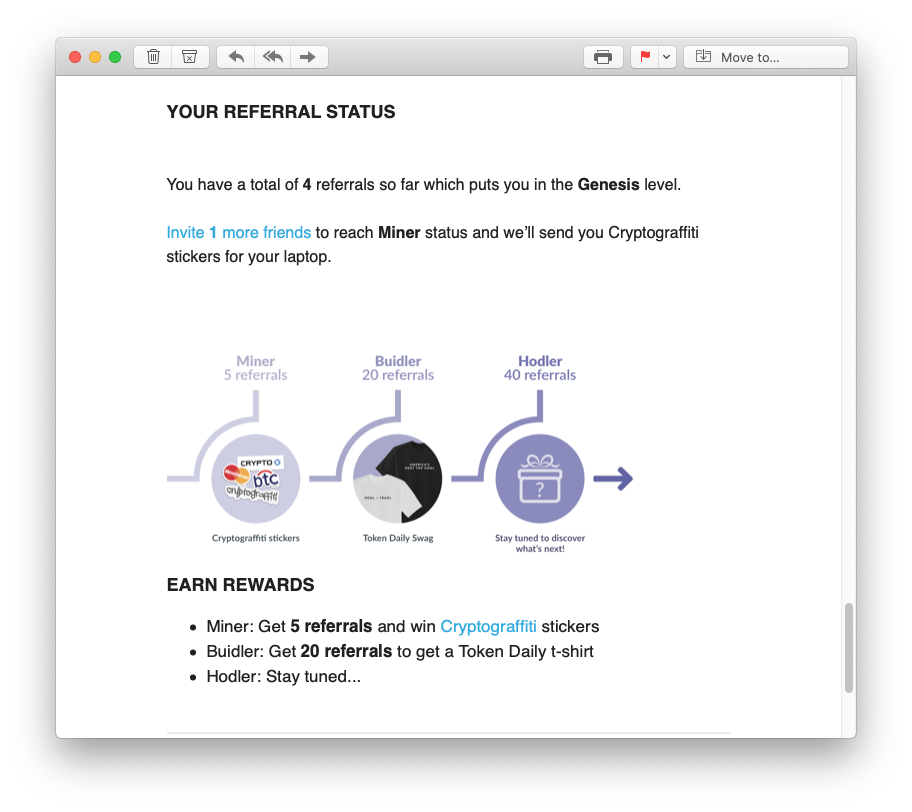The Psychology Behind Successful Newsletter Referral Programs
Understanding What Motivates Subscribers to Share Your Content

When we talk about newsletter referral programs, we often focus on the mechanics—the tools, the reward tiers, the tracking systems. But behind every successful referral program lies a deeper understanding of human psychology. The most effective newsletter referral programs don’t just offer rewards; they tap into fundamental psychological principles that motivate people to share.
At Firewards, we’ve studied the most successful newsletter referral programs and identified the key psychological drivers that turn passive readers into active advocates. Understanding these principles can transform your referral program from an afterthought to your primary growth engine.
The Trust Factor: Why Word-of-Mouth Is Unbeatable
Word-of-mouth recommendations work because they leverage existing trust relationships. When a friend recommends a newsletter, the recommendation carries implicit social proof that can’t be replicated through advertising.
Research consistently shows that people trust recommendations from friends and family more than any other form of marketing. According to Nielsen, 84% of people trust recommendations from people they know above all other forms of advertising.
This trust factor explains why referred subscribers are typically more engaged and loyal than those acquired through other channels. They’re not just responding to clever marketing; they’re acting on the personal endorsement of someone they trust.
The Four Psychological Motivators of Successful Referrals
1. Social Currency
People share things that make them look good. When subscribers recommend your newsletter, they’re not just doing you a favor—they’re associating themselves with your content and the values it represents.
This concept of “social currency,” popularized by Jonah Berger in his book “Contagious,” explains why publications like Morning Brew and The Hustle are so frequently shared. Their content helps readers appear informed, intelligent, and ahead of trends when they share it.
To leverage this principle in your referral program:
- Create content that makes readers feel like insiders
- Frame sharing as a way to help friends access valuable insights
- Position your brand as something people would be proud to associate with
2. Reciprocity
The principle of reciprocity states that when someone does something for us, we feel compelled to return the favor. If your newsletter consistently provides value, subscribers develop a sense of indebtedness that makes them more likely to reciprocate when you ask for a referral.
This explains why newsletters with high-quality, unique content typically have more successful referral programs. The reciprocity principle is already activated before you even ask for the share.
To activate reciprocity:
- Deliver exceptional value consistently
- Occasionally provide unexpected benefits (special editions, exclusive insights)
- Frame referrals as a way for subscribers to “give back”
3. Achievement and Progress
Humans are naturally motivated by a sense of achievement and visible progress toward goals. This explains the effectiveness of milestone-based referral programs, where subscribers unlock increasingly valuable rewards as they reach new referral levels.

The psychological principle at work here is the “endowed progress effect”—people are more motivated to complete a task when they feel they’ve already made progress toward the goal.
To leverage this motivation:
- Create a clear visual representation of progress
- Set an achievable first milestone to build momentum
- Celebrate each achievement to reinforce the behavior
4. Exclusivity and Community
People value being part of something exclusive. That’s why many successful referral programs offer access to private communities, exclusive content, or special recognition as rewards.
Morning Brew’s referral program exemplifies this approach by offering an exclusive Sunday newsletter to subscribers who make just three referrals. This creates both a sense of exclusivity and belonging to a select community of engaged readers.
To create this sense of exclusivity:
- Develop rewards that grant access to something not everyone has
- Create recognition for top referrers
- Build community features that connect active participants
Creating Psychological Alignment in Your Reward Structure
The most effective rewards aren’t necessarily the most expensive—they’re the ones that align perfectly with your audience’s psychological motivations.
Value Alignment
Your rewards should reinforce what your subscribers already value about your newsletter. If they subscribe for in-depth industry analysis, offering more exclusive analysis as a reward makes perfect sense. If they follow you for investing insights, early access to stock picks would be highly motivating.
This alignment explains why different newsletters succeed with different types of rewards:
- Finance newsletters succeed with investment insights as rewards
- Tech newsletters thrive with early beta access or exclusive tutorials
- Lifestyle publications do well with curated product recommendations
Intrinsic vs. Extrinsic Motivation
Research on motivation distinguishes between intrinsic motivators (doing something because it’s inherently satisfying) and extrinsic motivators (doing something for an external reward).
While extrinsic rewards like merchandise can be effective, the most powerful referral programs also tap into intrinsic motivations:
- The satisfaction of helping friends discover valuable content
- The feeling of supporting a creator or cause they believe in
- The sense of belonging to a community of like-minded people
Morning Brew’s success isn’t just about the coffee mugs and t-shirts—it’s about giving readers a way to identify as part of the Morning Brew community and share something they genuinely find valuable.
Psychological Friction and How to Reduce It
Even when motivation is high, psychological friction can prevent action. This friction includes:
- Decision paralysis - Too many sharing options can lead to inaction
- Unclear next steps - Uncertainty about the process causes hesitation
- Social risk - Fear of annoying friends or appearing promotional
The most successful newsletter referral programs minimize this friction by:
- Making the sharing process incredibly simple
- Providing pre-written messages that sound natural, not promotional
- Clearly explaining how the process works and what friends will experience

At Firewards, we’ve designed our referral widgets to minimize psychological friction, making the sharing process as seamless as possible.
Real-World Application: Crafting Your Psychological Strategy
Based on these psychological principles, here’s how to approach your newsletter referral program:
1. Identify Your Audience’s Core Motivations
Before designing rewards, understand what drives your specific audience:
- What do they value most about your content?
- What makes them feel like insiders or experts?
- What type of recognition would they value?
2. Design a Progressive Journey, Not Just Rewards
Think of your referral program as a journey with multiple psychological touchpoints:
- The initial invitation to participate should appeal to their desire to help others
- The first achievement should come quickly to establish momentum
- Visual progress indicators maintain motivation between milestones
- Recognition elements satisfy the need for social validation
3. Test and Refine Based on Behavioral Data
Different audiences respond to different psychological triggers. Use your program data to understand what’s working:
- Which rewards generate the most sharing activity?
- At what point do subscribers typically disengage?
- How does messaging affect participation rates?
Conclusion: Psychology as Your Competitive Advantage
The technical aspects of implementing a referral program are increasingly commoditized. Your competitive advantage lies in how well you understand and apply the psychological principles that drive sharing behavior.
By designing your newsletter referral program with these psychological insights in mind, you can create a system that doesn’t just offer rewards—it creates a deeply satisfying experience that subscribers want to participate in.
At Firewards, we’ve built our platform to make implementing these psychological principles easy. From progress visualization to milestone achievements, our tools are designed to tap into the core motivations that drive successful referrals.
Ready to create a psychologically optimized referral program for your newsletter? Get started with Firewards today and transform your subscribers from passive readers to enthusiastic advocates.
Published by

Nic Fassbender